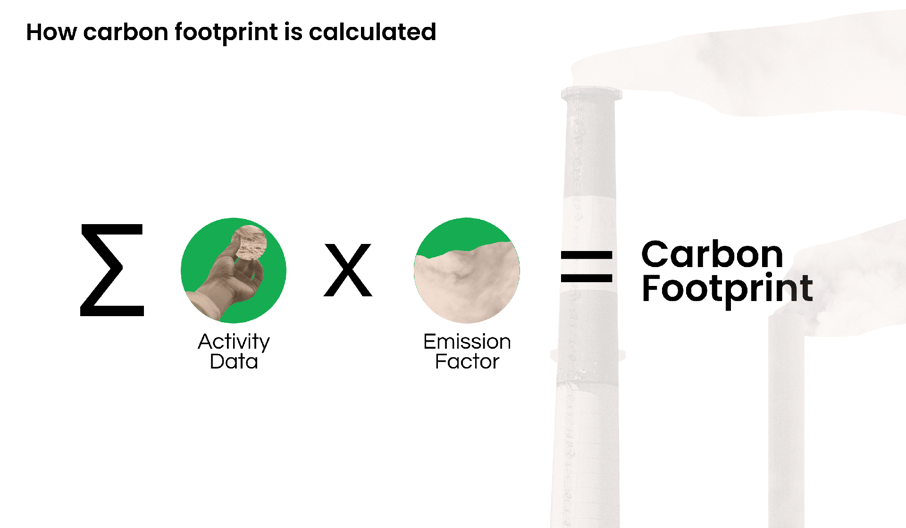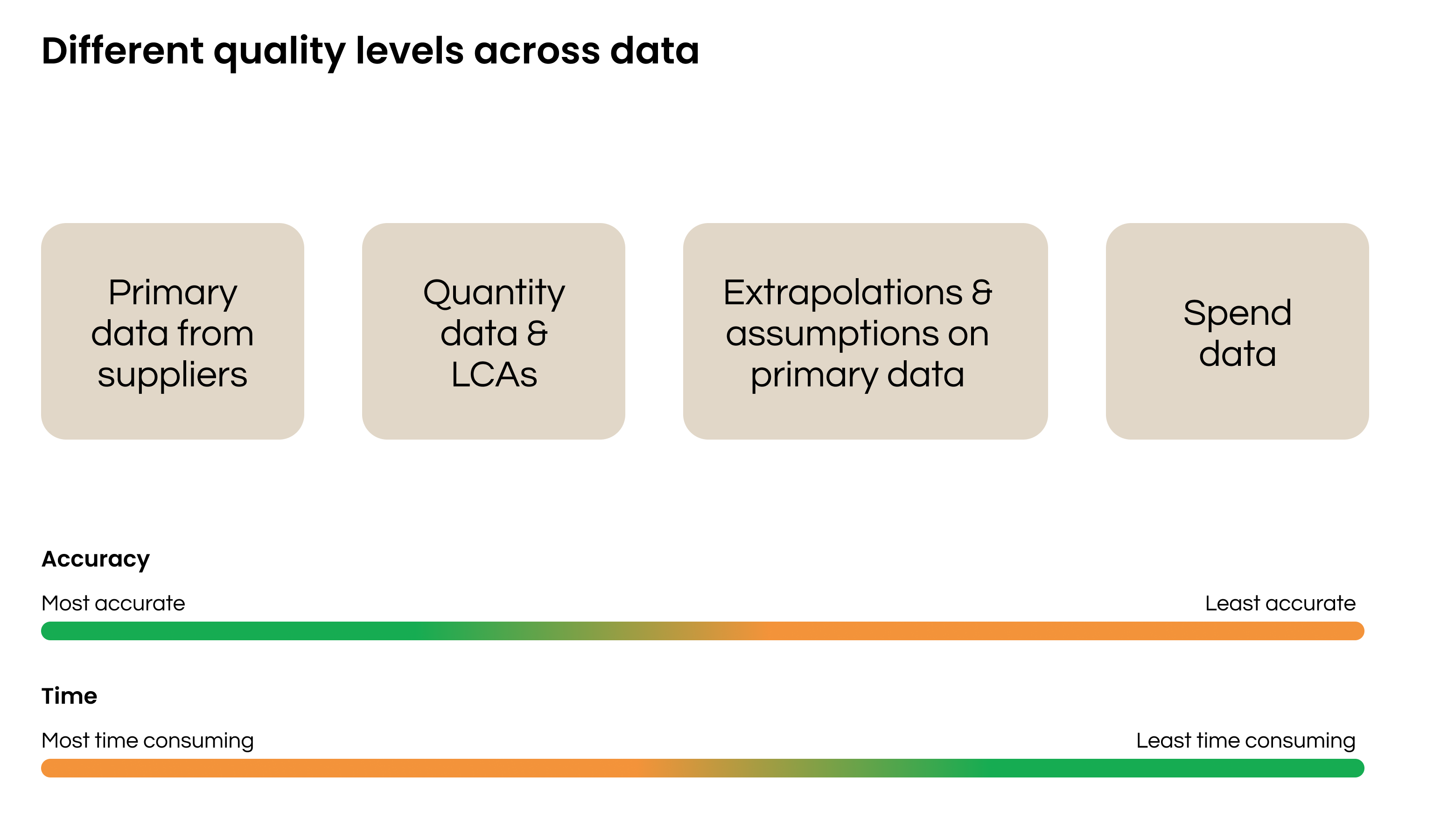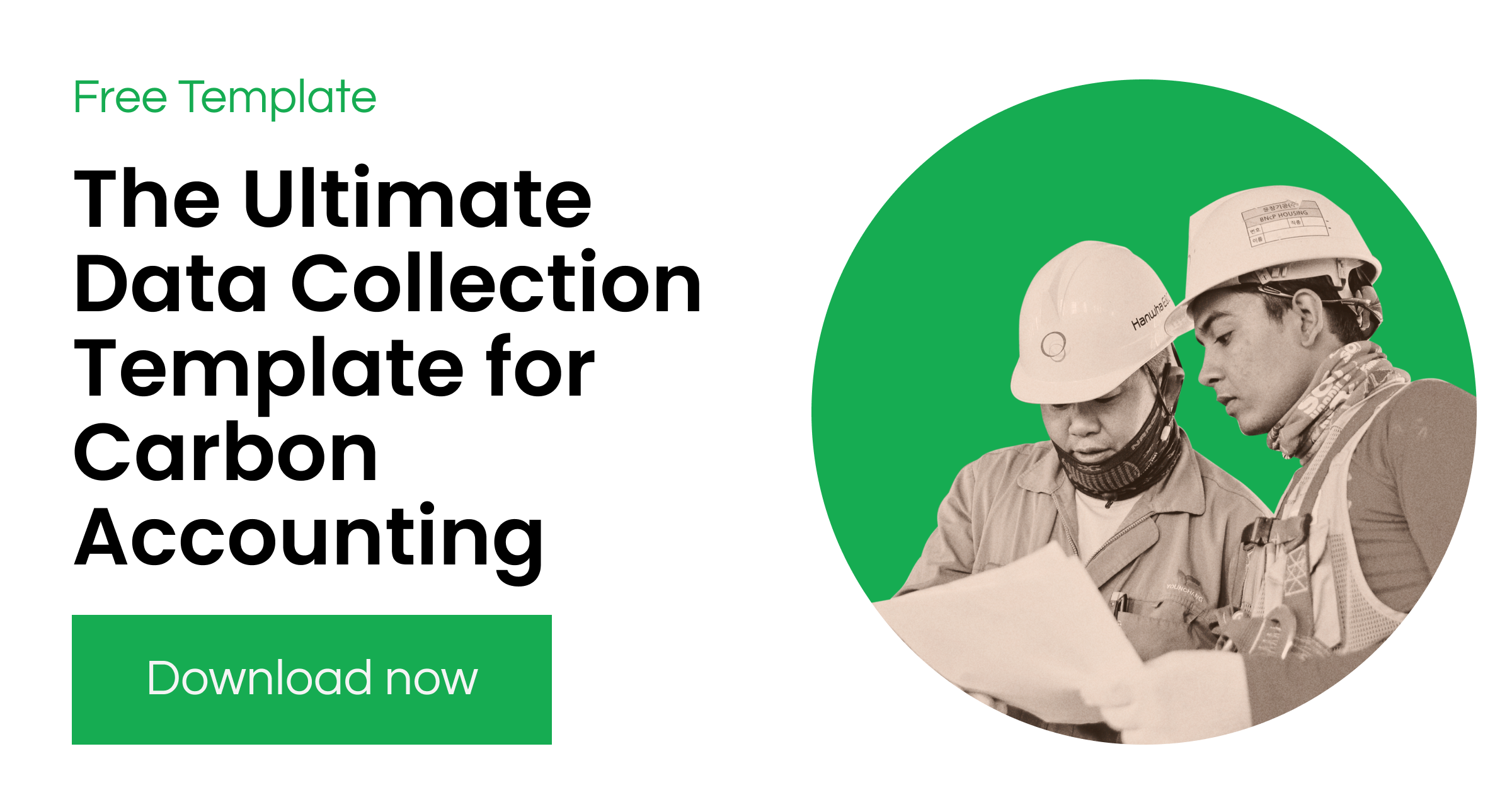Where Everything Starts: Data Collection for Carbon Footprints

Defining relevant metrics for your sustainability journey is the first step to take if you want to improve. When talking about climate strategy, this initial stage consists of measuring your carbon footprint.
An organisation’s carbon footprint is the sum of all greenhouse gas (GHG) emissions estimated to be released into the atmosphere because of its:
- Operations;
- Purchased energy;
- Or value chain activities.
This boils down to one formula:

Hence, in very simple terms, the carbon footprint of an organisation is the sum of the activity data multiplied by the applicable emission factors.
Activity data refer to those data deriving from activities that generate GHG emissions. For instance, it can be:
- Litres of fuel used by the company’s fleet;
- Amount of electricity purchased for the office;
- The number of flights taken in a specific year.
Emission factors capture the rate at which a specific activity releases GHG emissions into the atmosphere.
However, the above can be easier said than done. To start with, this article will focus on activity data. We will answer common questions on data collection, such as:
- What data should I use?
- Which activities should I include?
- How to tackle data gaps?
Taking a step back: why do we need to decarbonise?
Carbon accounting aims to assess how an organisation contributes to the nationally determined contribution pathways (NDCs) for decarbonisation. This allows the entity to report on its progress and set clear goals and targets for the future, aligned with the commitments of the Paris Agreement.
Figure 1 (Climate Action Tracker) showcases the urgency of climate action. If no climate policies are set in place, we’d be moving towards a 4.1° - 4.8°C scenario by 2100. This implies drastic consequences for our planet, which would undergo irreversible changes.
On the other spectrum, the 1.5°C pathway is the suggested one. However, it will stay within reach only if we take collective and drastic action.

Hence, organisations play a crucial role in keeping the 1.5°C paths within sight.
Based on the GHG Protocol, emission sources to calculate one’s carbon footprint are grouped into three scopes:
- Scope 1
- Scope 2
- Scope 3
If you want to decarbonise your business across the three scopes, read our article ‘Emission Reduction Strategy and How to Decarbonise’.
Understand where you stand: carbon accounting
As mentioned above, to define and achieve decarbonisation ambitions, you first need to understand where you’re at. Carbon accounting serves the purpose.
Based on the GHG Protocol, carbon accounting is articulated in 5 main steps:
- Step 1 – Understand the scopes and organisational boundaries;
- Step 2 – Collect activity data from different internal and external sources;
- Step 3 – Convert the activity metrics into carbon emissions;
- Step 4 – Determine which framework to use and calculate Scope 1, 2, and 3;
- Step 5 – Report emissions and disclose goals and targets;
This article focuses on Step 2 – Data Collection.
However, for each step of the carbon accounting process, keep in mind the five key GHG Protocol principles:
- Relevance – all relevant information for internal and external users’ decision-making should be included in the GHG report.
- Completeness – all material emissions sources must be accounted for to provide a comprehensive inventory.
- Consistency – to be able to compare emissions data, the reporting organisation must apply the same approach and calculation methodology over time.
- Transparency – information on the process, methodology, and assumptions used should be disclosed in a clear and understandable manner.
- Accuracy – uncertainty should be minimised to ensure the credibility of the reported information.
How to: data collection
First thing first, you need to understand the different types of data you can collect. Important to note is that data quality may vary across categories and sites.
From the most to the least accurate data types, organisations can collect:
- Primary data from suppliers;
- Quantity data & Life Cycle Assessment;
- Extrapolations & assumptions on primary data;
- Spend data.

Once you have a clear overview of the data available, you can undertake the data collection process:
- Identify the most relevant categories for your organisation;
- Perform a screening based on estimates and spend data for the least accurate data;
- Review the results and identify those data holders that own priority data;
- Collect primary data where possible for your hotspots, hence those categories that are material.
By following this step-by-step approach and setting in place a good data collection methodology, your organisation will benefit from:
- Quality assurance of the reported information through an external audit;
- Higher accuracy and constant monitoring of the climate performance;
- The ability to set targets for decarbonisation;
- Higher scores in external ratings, such as EcoVadis and CDP;
- Stronger communication on climate progress and ambitions to stakeholders.
Where data collection tricks you
Data collection does not need to be a daunting task. However, there are a set of challenges that one can face when unprepared, such as:
Defining boundaries
Organisations need to choose which approach to use when starting their carbon accounting journey and stick to it over time.
Ensuring auditability
Organisations often fail verification against ISO standards, because of the lack of auditing trails. Ensure that the data used are easy to retrieve and understand to facilitate verifiability and auditing processes.
Mapping of activities and data holders
Organisations often struggle in understanding what activities and data are relevant and thus should be included in the inventory.
On top of that, it can be challenging to identify data owners. This applies especially to Scope 3 data as data holders are external to the organisation.
Missing data points
When data is not (fully) available, accounting entities face the issue of estimating the missing data.
Two possible approaches to overcome that consist of (Figure 4):
- Extrapolation;
- Industry benchmarking.

Managing data format and version accurately
Organisations often struggle in creating and populating a clean and cohesive database in line with the reporting standards requirements.
Balancing accuracy and pragmatism
The main challenge here breaks down to understanding which emission sources should be prioritised based on their materiality.
Best practices
The importance of data collection to account for your GHG emissions is well summarised by the famous quote of Peter Drucker:
You cannot manage what you cannot measure.
Hence, we conclude by sharing a few best practices to help you nail carbon accounting.
- Define a clear reporting period and list of entities to avoid double counting, as per the boundary set;
- Assign data collection to a small group of people;
- Keep track of data sources and explain any assumption applied;
- Always include units for data provided;
Keep your files clear and organised. To help you with that we’ve created a Data Collection Template that you can access here.

